Red Moon is set in our near future, 2047. The date is important since it is fifty years after the British handed control of Hong Kong back to the Chinese, and marks the moment when Hong Kong will completely revert to Chinese political control. Meanwhile, in Kim Stanley Robinson’s fictional future, China has established bases at the southern pole of the moon, accounting for its largest human presence, while research and resource industries have made some significant inroads on the moon’s surface. At the northern pole of the moon lies the American base and a series of other smaller bases representing other countries. Effectively, China is beginning to dominate both culturally and economically. The American dollar is propped by Chinese investment in American bonds, and America’s fractious democracy reveals some of the weaknesses in its society.
Yet not everything is going smoothly for China, either. A perception that China’s ruling party is dominant and completely in control is challenged by Robinson’s narrative, which places China’s politics within a wider historical context of stability followed by decline and revolution. Chinese rulers rule by the assent of the people, no matter the perceptions created on June 4 1989 when student demonstrators were killed in Tiananmen Square. China’s underclasses – the Billion, the low-end population, the three withouts (all terms for China’s poorer classes under the hukou system, living in government-designated areas their whole lives, unless they illegally travel to other regions or to the city for economic betterment) – are a formidable political force through their sheer weight of numbers. Their plight highlights the crisis of representation within China as well as the west.
In this respect, Red Moon is typical of Robinson’s oeuvre. His novels are political, representing the scientific and technical challenges of our times and the cultural and political forces necessitating change. And while the catalyst for Robinson’s plots may be a crime or social upheaval, their intent is largely optimistic and utopian in outlook. Things can be better; Robinson’s stories are a study in how that might be.
Yet Red Moon feels slightly out of kilter with his other works. In Aurora we experience the micro-society of a deep-space ship as it successfully traverses the cosmos to make a dramatic re-entry to our Solar system. In Robinson’s Mars series Robinson dramatises the terraforming of Mars and humanity’s adaptation to this new environment. In 2312, Robinson considers the possibilities of new environmental solutions and the potential for artificial intelligence. There is a little something of all these previous novels in Red Moon. As always, Robinson offers interesting technical solutions to the problems of space travel and living in different gravitational environments. An AI system also features as a character in the book, although more limited than the futuristic version in 2312. Population pressures also loom large as the catalyst for social and political change in this novel.
However, my first impressions were that this was not as engaging as some of those other works. The first thing was the premise of the story. Fred Fredericks, an American quantum physicist who works as a technical officer for Swiss Quantum Works, has come to the moon to deliver a new kind of phone that uses quantum mechanics for secure communications to a Chinese official, Chang Yazu. Unfortunately for Fredericks (and for Yazu) he is tainted with a substance on his hand by unknown agents which when mixed with a substance on Yazu’s hand produces a lethal result. Yazu dies. Fredericks almost dies too but then is implicated in Yazu’s murder. Like much of Robinson’s work, the incident seems to echo our current history, recalling the murder of Kim Jong-nam, elder brother to North Korea’s leader, in an airport earlier this year after two women were duped into smearing NV nerve agent on his face. There is also the case of the Skripals in England, poisoned with Novichok by Russian agents, who survived. In this case, Fredericks is clearly the fall-guy in a political assassination. Fortunately for him, the Chinese are not as politically unified as the Americans suppose. A group called Red Spear attempt to kidnap Fredericks. Other factions position themselves to take advantage of China’s change in political leadership. And Chinese intelligence agencies have become Balkanised, competitive and secretive. It seems Yazu’s assassination was part of an attempt to sow the seeds of political discord in China. In the end, it is deemed safer to get Fredericks back to Earth.
All this is well and good, but the plot becomes a little Hollywood at this point. Fredericks is to return to Earth with the celebrity traveller, Ta Shu, along with a pregnant woman who has broken health protocols on the moon by getting pregnant. It turns out she is not only pregnant but the political activist, Chan Qi, the daughter of Chan Guoliang, now running for the presidency of the Chinese party as it prepares to make generational changes. Qi has made a habit of avoiding the scrutiny of the state for years and has become the figurehead of political dissidents within China. So, when Qi accompanies Fredericks and Ta Shu, Fredericks finds that the authorities’ interest in his recapture pales in comparison to their desire to find Qi. The plot at this point seems to echo countless Hollywood films: the man on the run for a crime he didn’t commit, whose fate becomes entwined with that of a young woman he doesn’t know. Together they must somehow prove their innocence and overcome the bad guys. There is a lot of running and hiding on Earth, which seems to be marking time in the plot, before the pair are returned to the moon.
I found this aspect of the novel less compelling than Robinson’s speculative ideas, and I don’t think this was helped by the shuffling between the moon and Earth like it was a bus ride, particularly for Ta Shu, who travels to the moon on three separate occasions. At one point he leaves the moon simply to deal with the affairs of his dying mother, which seemed superfluous to the plot, except that Robinson has to keep his characters at distance from the action or bring them closer from time to time. Part of Robinson’s problem in fashioning this narrative is that his real story is of vast social and political changes here on Earth, and to tell that story – to reflect, ultimately, on what the rise of China means to its people and the people of the world – Robinson didn’t need to use the moon. For the sake of the story, the moon, itself, is little more than a symbol of Chinese ascendency and America’s stagnation. America got to the moon first in 1969, China landed an unmanned craft there in 2013, and in 2047, Chinese bases dominate the moon.
The real story is of social and political change: of the rise of dissident forces in China; of the politicisation of the Chinese poor; of the disruptive potential of cryptocurrencies for first world economies and their political stability; and of the belief in balance – feng shui – not only in the environment, but in the social contract between people and their governments. Robinsons novels are interesting not for their action but his ability to articulate ideas that are just on the surface of consciousness and to reoriente his readers’ perspective: Capitalism is the driving force of the twenty-first century: sure. But old ideologies and political systems are now merely local representatives of that system, a leftover from an era of nationalism and colonialism. Even “communist China” is just another representation of global capital, just as America’s pretence of democracy is questionable: America is more of a one-party state than China. It’s entirely ruled by the market.
This, and Robinson’s ability to apply scientific principles to society, are compelling. In Ta Shu’s travel blog he gives his audience a brief history of the formation of the Earth and moon. Theia, the planetesimal that impacted Earth in its early history to form the moon and the Earth as it now is, is a political metaphor in Robinson’s hands. Disaster is inevitable, but from disaster comes opportunity and new beginnings:
So now I want to suggest that even if there is a Theia looming out there in the orbit of our collective history, spiralling in toward us – as perhaps there is – and even if it has already been dislodged from its Lagrange point and is now bearing down upon us, such that it is about to collide with some already-existing Gaia inside us, as seems inevitable, gravity and inertia being what they are – this has happened before. And the results, no matter how catastrophic at first, can still eventually turn to the good.
Robinson’s metaphor suggests the true scale of his novel: that things are not eventually good for the individual or even for the current generation; Robinson offers hope for the future and for humanity, instead.
This is where Robinson can be such an interesting writer. While the story on the moon is actually a weaker aspect of the plot, it becomes an obvious and very apt metaphor for humanity and its future: a pregnant woman and all the uncertainty latent within that situation captures the sense of hope, danger and uncertainty of the new social compact sought by the world’s population. What happens on the moon, while dramatic, dwindles in importance at the plot level, even though it remains a significant symbol, much like Qi’s symbolic importance to the protests on Earth. The moon is almost unimportant to Earth’s present travails, but it represents a symbolic future.
It’s an interesting device which echoes the utopian impulse of Robinson’s other works, even if, on the scale of a human life, the outcomes may be somewhat ambiguous.
.
Other Books by Kim Stanley Robinson

 RSS Feed
RSS Feed Facebook
Facebook Instagram
Instagram YouTube
YouTube Subscribe to our Newsletter
Subscribe to our Newsletter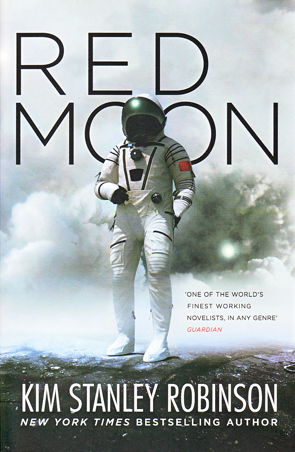

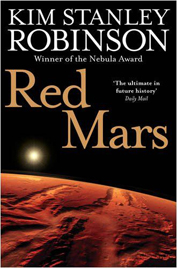
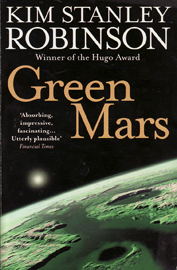
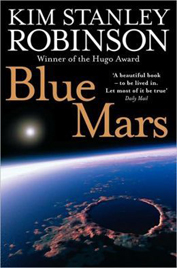
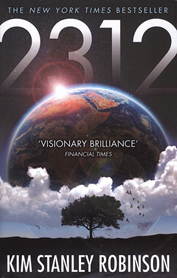
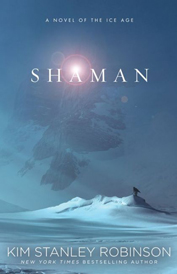
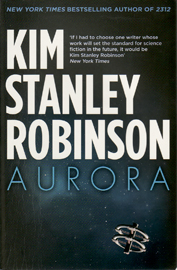
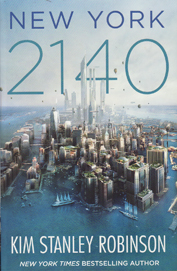


No one has commented yet. Be the first!